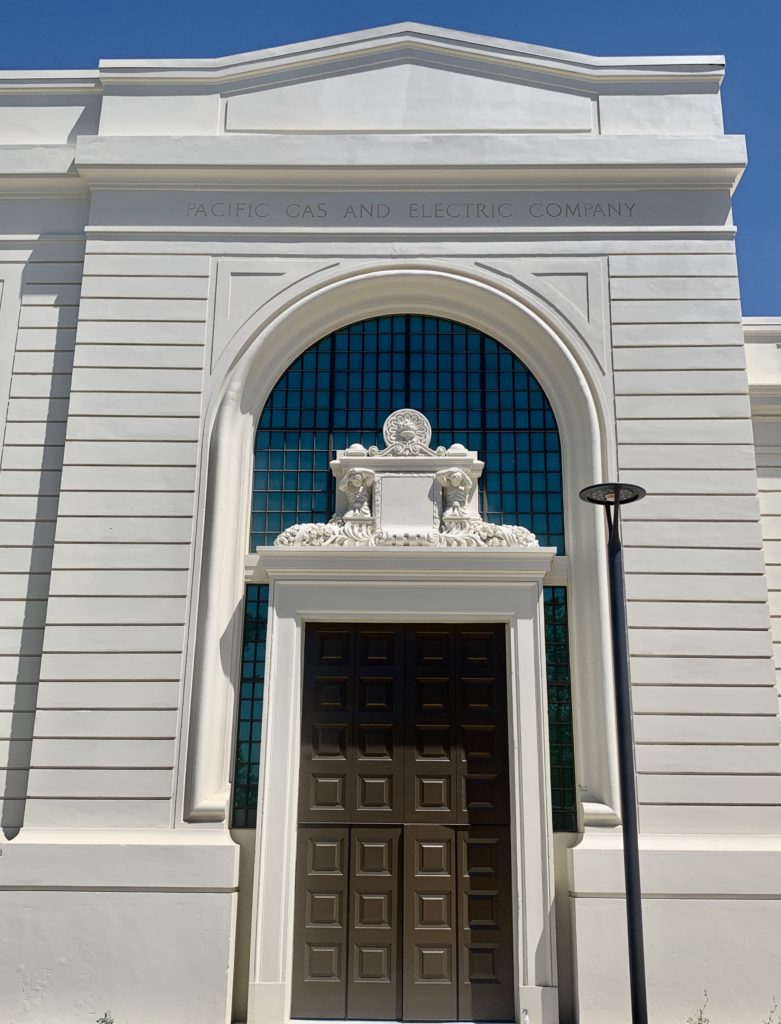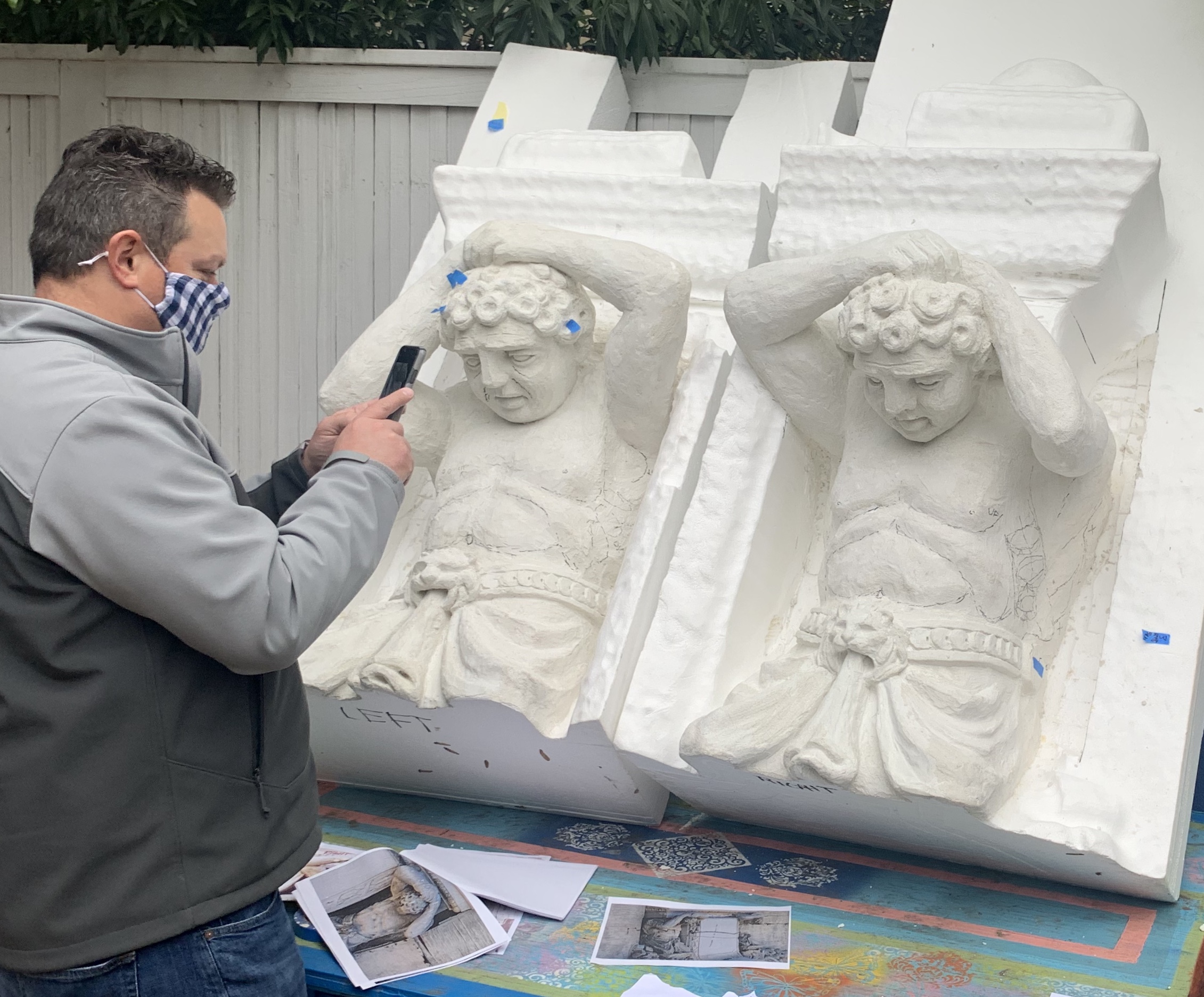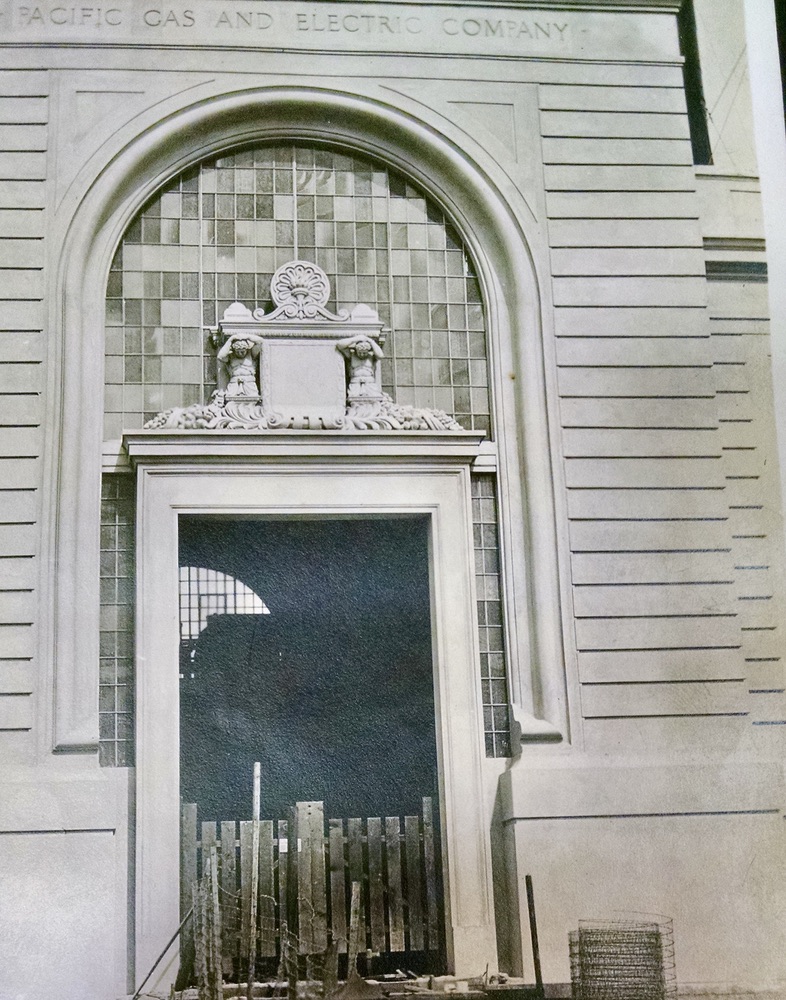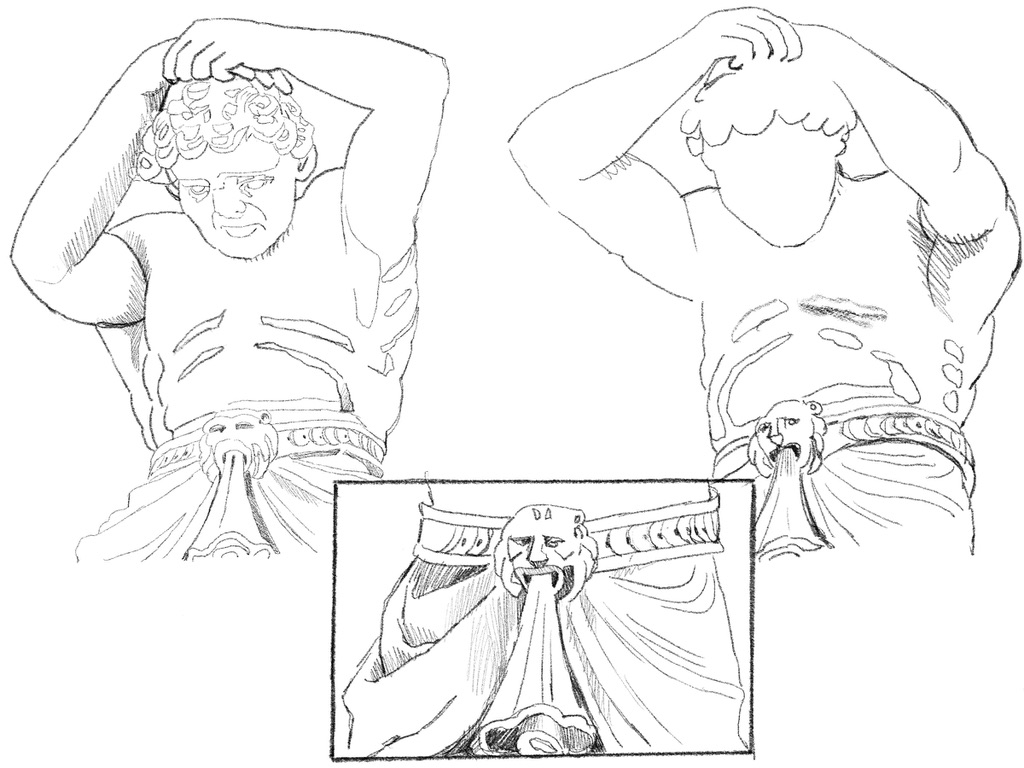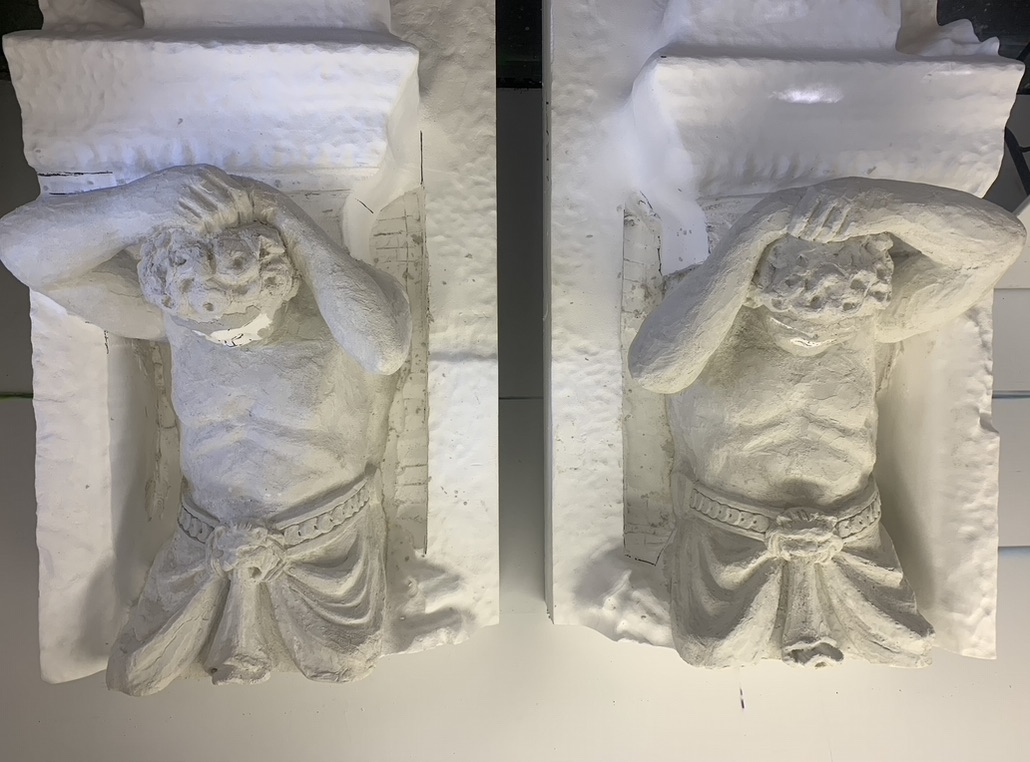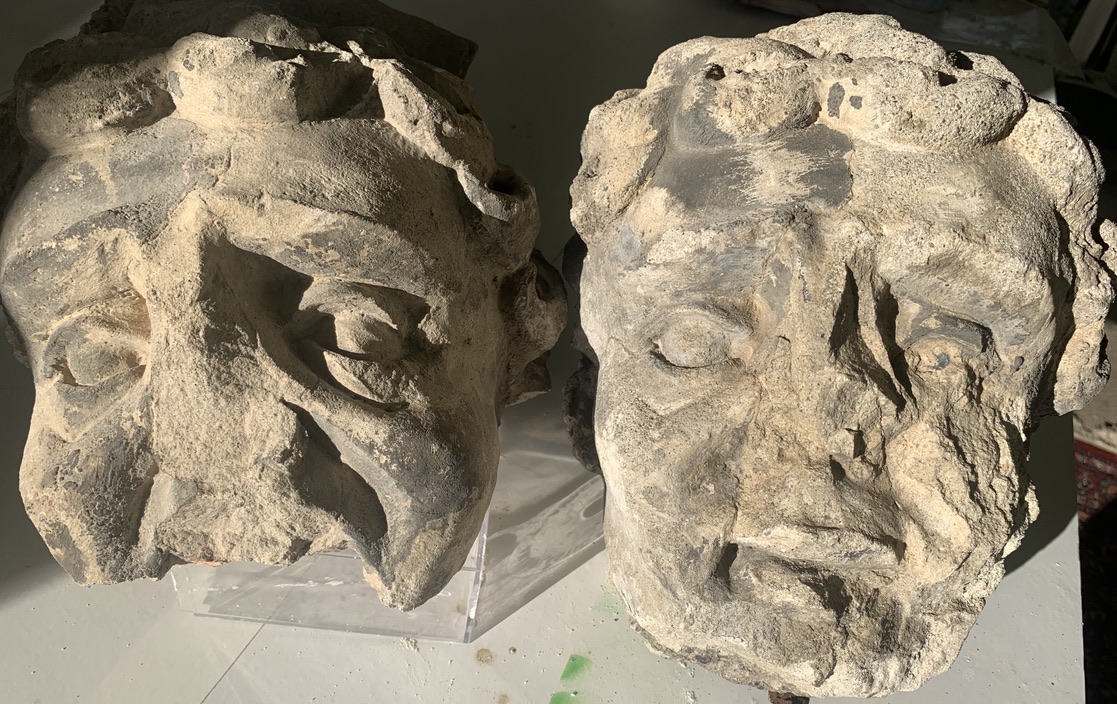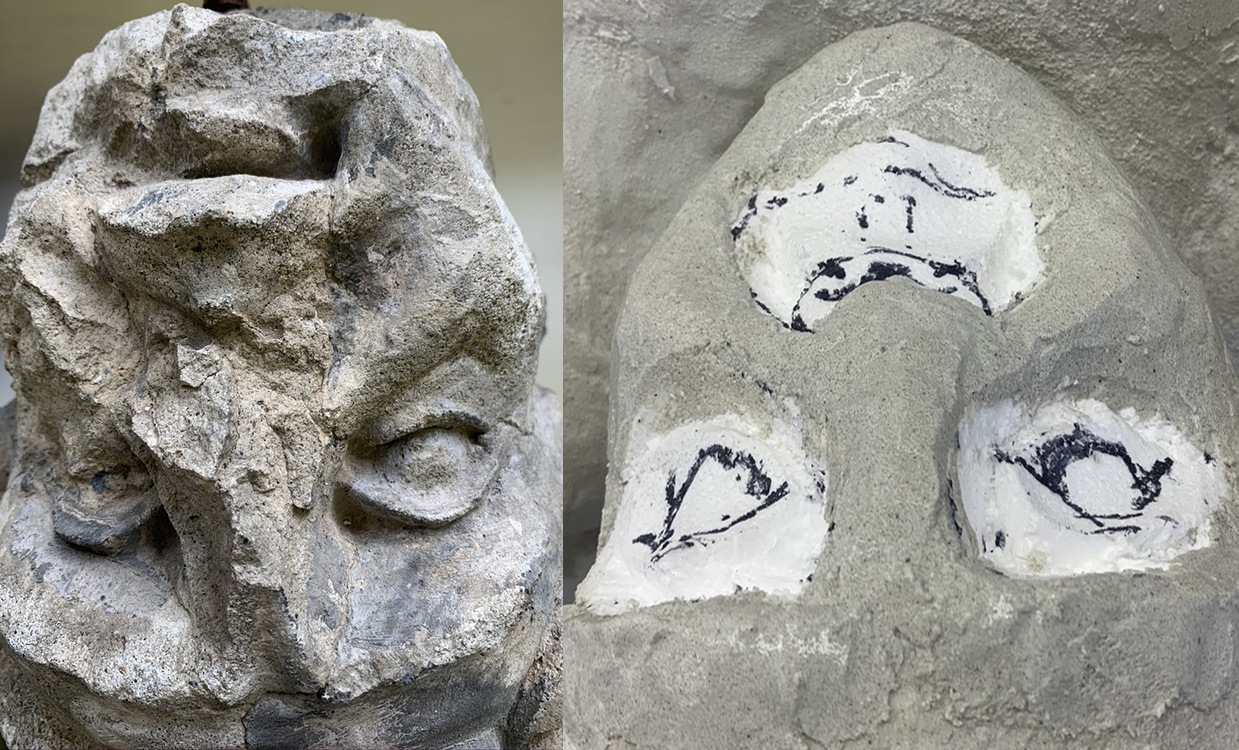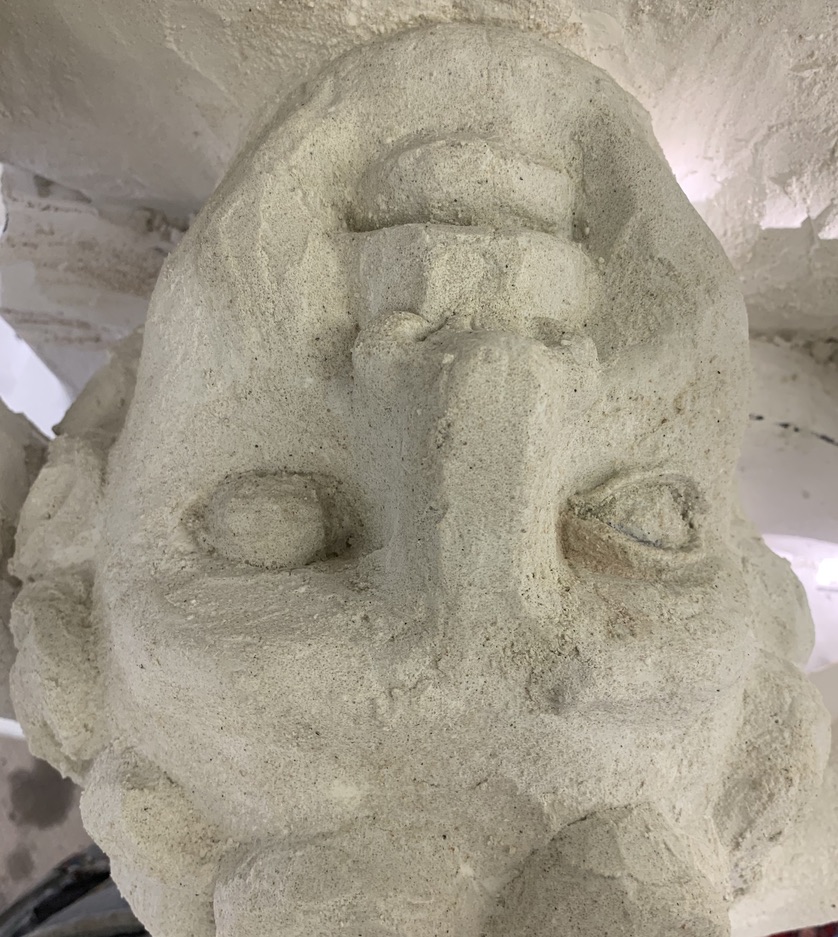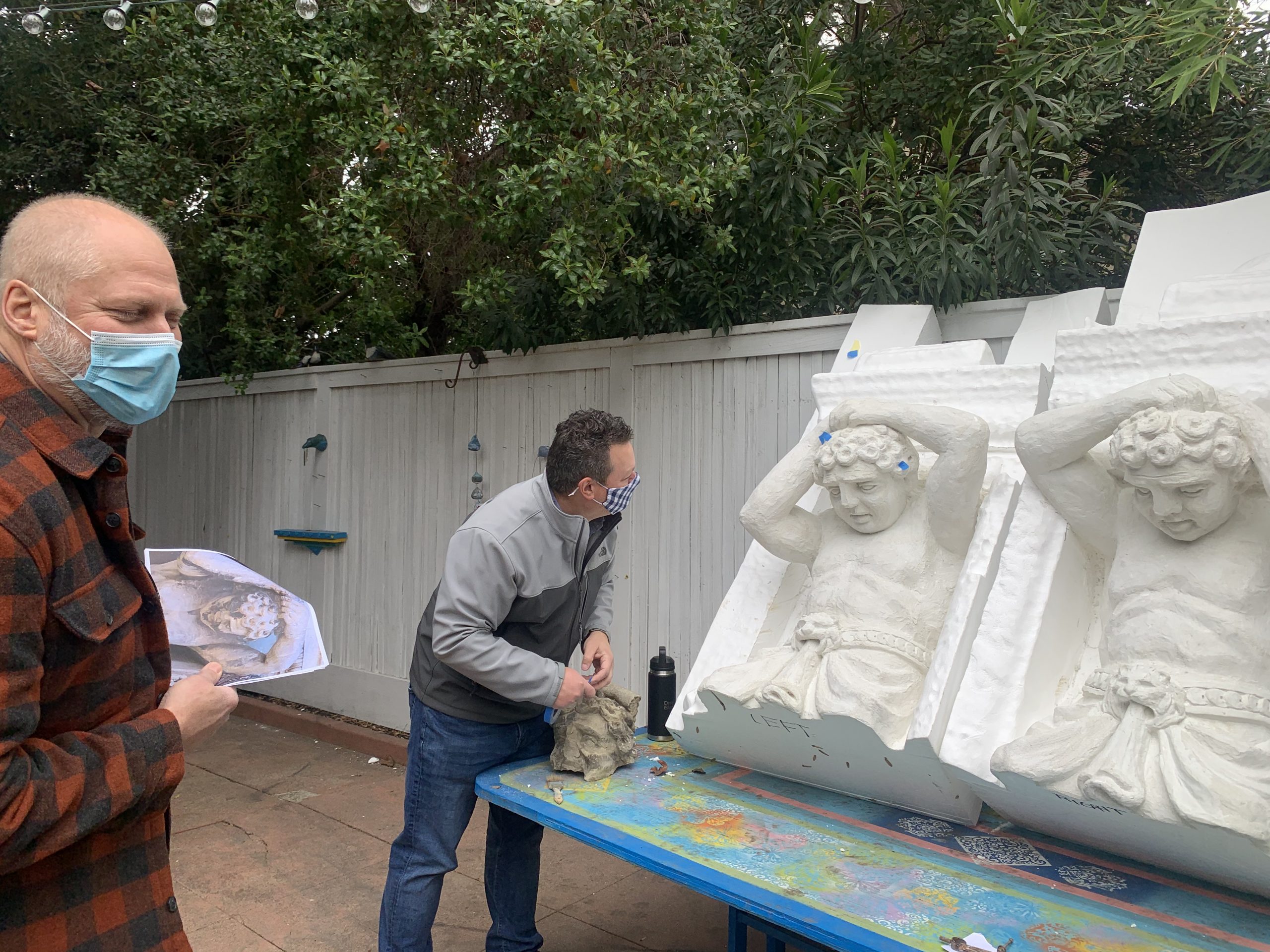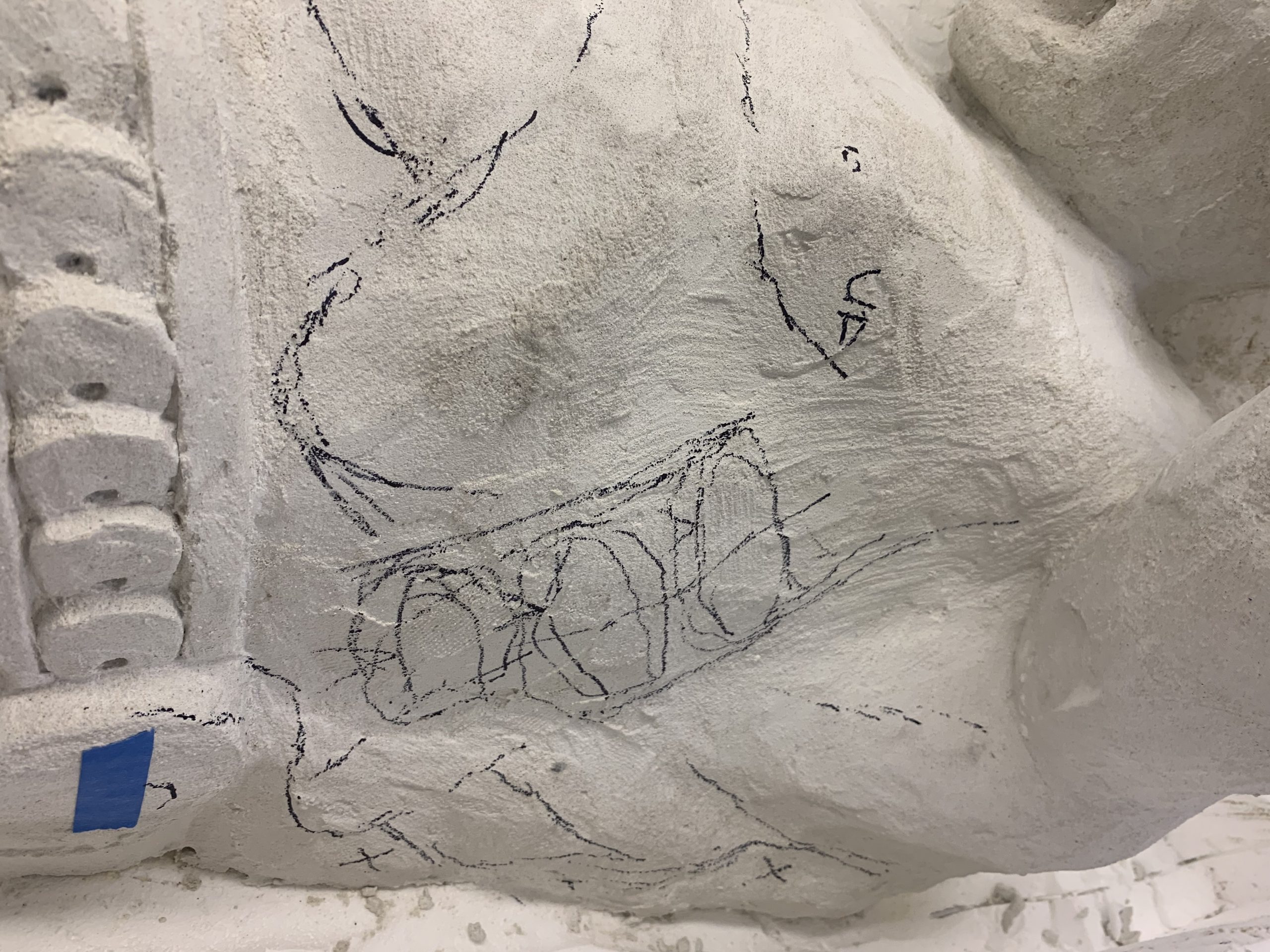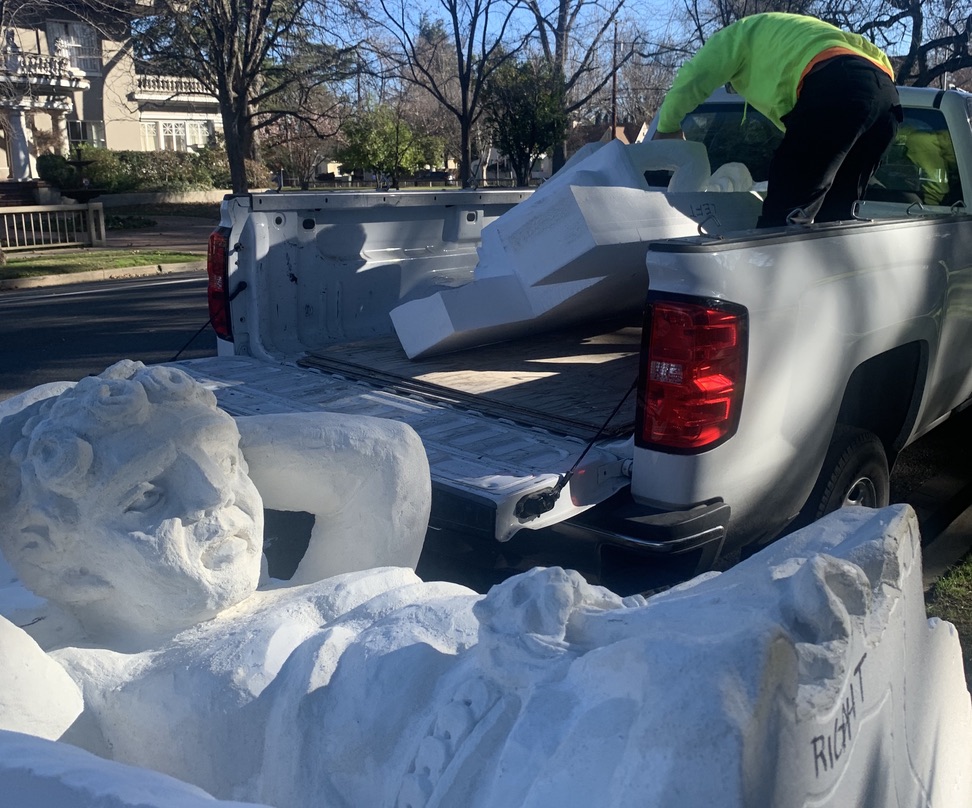Cartouches for the new Sacramento Museum of Science and Curiosity

The challenge: return the figures in the cartouche, as closely as possible, to what they they were originally. The elements were too degraded for historical restoration, a process that I’m not qualified to do. But I am thrilled to contribute to the process of reproducing these figures.
This is the story about the process, in three phases. 1: research and preparing the 3D foam base, 2: the bodies, 3: the faces.
Phase 1: research and alteration of 3D architectural foam base as supplied by subcontractor.
The original construction of the Pacific Gas and Electric power station, 1909

By studying images of the figures, I made detailed sketches of each part: arms, torsos, heads, skirts.
Phase 2: the bodies
Phase 3: the faces
Though most of the original cartouche was too disintegrated, the heads had been saved, and delivered to my studio. This was great news, as it was critical to be able to measure accurately.
From a photo profile, I drew a new profile, following the information there, like the angle of the nose, hints of the lips.
I made a paper pattern of the profile, and started to build up the cement, layer by layer.
Adding, refining, measuring over and over: getting closer.
I had to turn the figures upside down so that so that the cement would stay in place, building up each feature, including eyeballs and lids.
Working upside down was a guessing game, rolling eyeballs, adding upper and lower lids. Accuracy or corrections only revealed when turned right again.
A visit by architect and contractor, comparing and reviewing all the elements to the original heads and photos.
Changes: mostly adding bulk to torsos. Note the marks on the torsos, and a slight tweak to one mouth.
After a final visit by the architect and contractor, approval of changes. Delivery to the sub who will be making the molds from these figures, pouring GFRC cement into the molds, and then adding them to the other parts of the cartouche, to be reinstalled as they originally existed.
